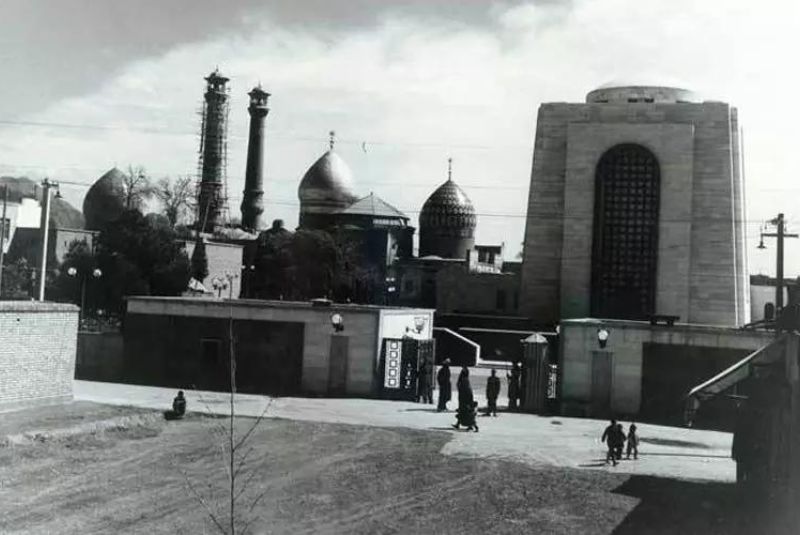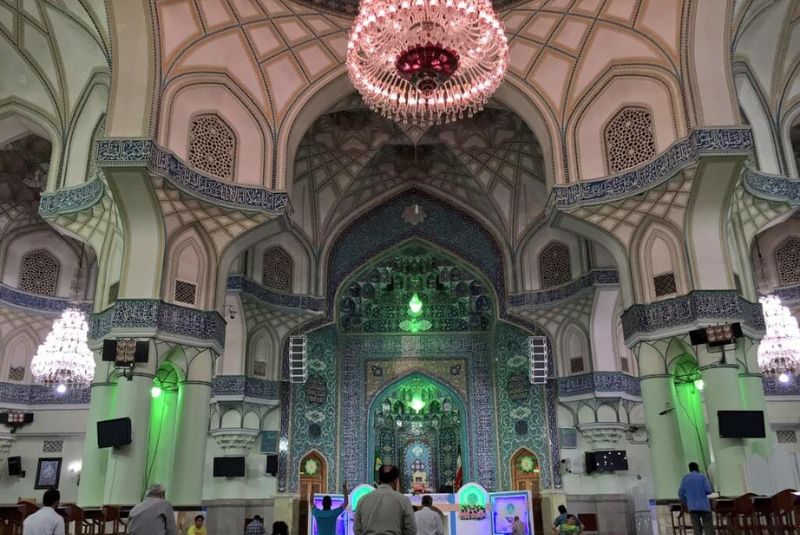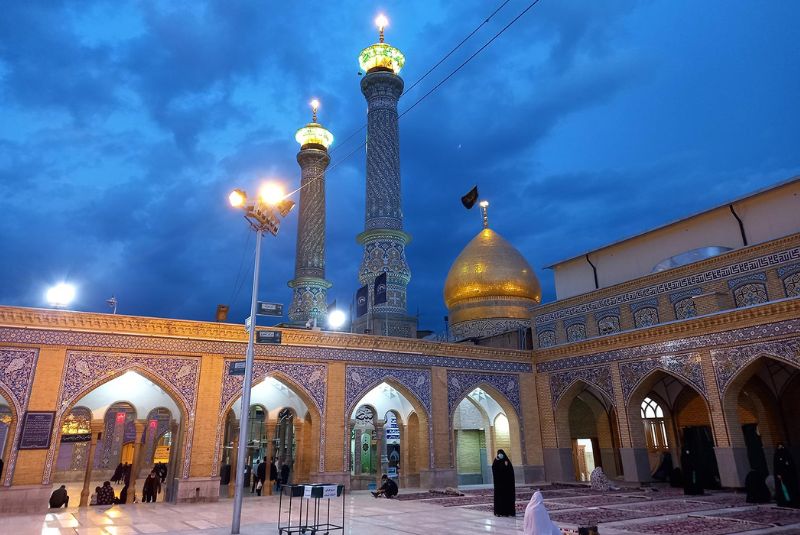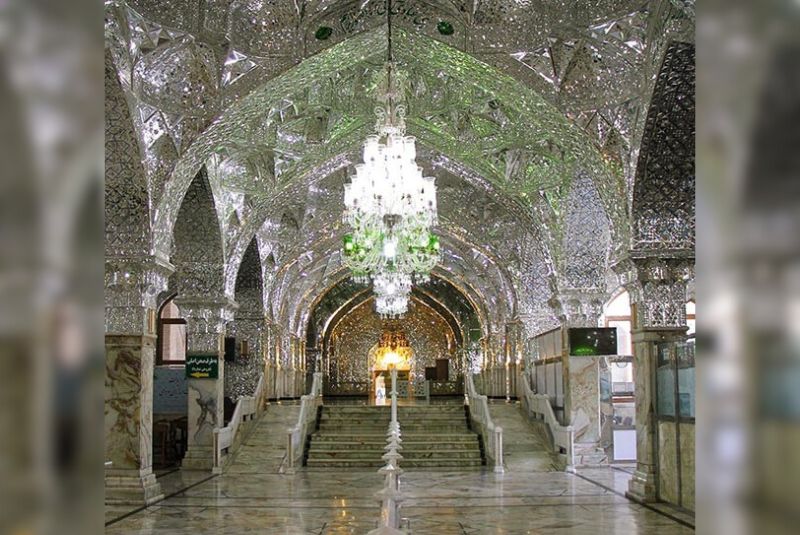Shah Abdul Azim Shrine: A Spiritual Heritage in Rey
Located in the southern suburbs of Tehran, Iran, the Shah Abdul Azim Shrine stands as a testament to centuries of rich history and spiritual significance.
Rey, the city that cradles this sacred site, has been a focal point throughout the ages, earning titles like the "religious capital of Zoroastrians" and the "summer capital of Parthians." Today, it thrives as a cultural tapestry woven with threads of diverse heritage.
The Shah Abdul Azim Shrine, also known as Shah Abdol Azim, bears witness to the journey of Hazrat Abdul Azim Hasanī, a revered figure in Shia Islam. Born in Medina, he sought refuge in Rey, escaping the oppressive Abbasid caliphate. The shrine, marking his final resting place, has become a beacon for pilgrims and tourists alike, drawing them with its architectural splendor and spiritual aura.
This article unravels the layers of history and spirituality enshrined within the Shah Abdul Azim Shrine, inviting you to explore its location and the vibrant historical backdrop of Rey city. Join us on a journey through time as we delve into the diverse cultural and religious heritage that graces this sacred destination.
Historical Background of Shah Abdul Azim

The life of Hazrat Abdul Azim Hasanī unfolds as a tale of resilience and devotion in the annals of Islamic history. Born in 173 AH in the city of Medina, he traced his lineage back to Hazrat Imam Hasan Mojtabi and Hazrat Ali through four intermediaries, establishing an esteemed connection to the Prophet's family.
Abdul Azim's migration to Rey was not a mere geographical shift but a response to the tumultuous political climate of the time. Faced with the oppressive actions of the Abbasid caliphs, characterized by coercion and insults toward the Prophet's family, he sought refuge in Rey. The city, known for its strong Shiite presence, provided a sanctuary where Abdul Azim could practice and propagate his beliefs freely.
During his clandestine residence in Rey, Abdul Azim Hasanī played a pivotal role in nurturing the local Shiite community. His discreet interactions with the Shiite populace laid the foundation for a growing network of followers. Responding to queries, dispelling religious doubts, and offering guidance, Abdul Azim became a revered figure in the city, known for his wisdom and piety.
The establishment of the shrine marks a significant chapter in the historical narrative. In the years 254-255 AH, the holy body of Hazrat Abdul Azim Hasanī found its resting place outside Rey's ramparts, in a serene garden. The initial construction, modest in its simplicity, was ordered by "Muhammad bin Zeyd Da'i Alavi," and built on his holy grave. This marked the inception of what would evolve into the grand Shah Abdul Azim Shrine we encounter today.
Though the exact timeline of Abdul Azim's residence remains elusive, historical texts illuminate his impactful contributions during his time in Rey. Engaging in cultural, scientific, and political pursuits, he became a beacon of knowledge and spirituality. The shrine, a testament to his enduring legacy, would undergo successive phases of development in the hands of various rulers and dynasties, evolving into a revered pilgrimage site and a cultural treasure trove.
| Related: Top 14 Religious Tourist Attractions in Iran
Shah Abdul Azim Shrine Architectural Evolution

The Seljuk period marked the shrine's early architectural identity. Simple yet elegant, the original construction featured a brick facade, a silent witness to the first whispers of devotion, dating back to the 5th century AH.
As the Timurid era dawned, notable additions adorned the shrine, amplifying its grandeur. The architectural prowess of the time left its indelible mark on the sacred site. The intricate designs and structures woven into the fabric of the shrine reflect the artistic flourishes synonymous with the Timurid dynasty's legacy.
The Safavid rulers, recognizing the spiritual and cultural importance of the shrine, embarked on significant contributions to its development. In the middle of the 10th century AH, the construction of the main porch added a regal dimension to the shrine's architectural ensemble. This era witnessed a harmonious blend of Persian artistry and religious devotion, as Safavid kings continued to embellish the shrine, creating a lasting legacy that resonates through the ages.

The Qajar era, unfolding after Tehran assumed the role of the country's capital, brought about a renewed focus on the Shah Abdul Azim Shrine. The proximity of Rey city to the capital drew the attention of Qajar officials, sparking an era of expansion and revitalization. New constructions, including the silver shrine (built during Fath-Ali Shah Qajar's reign), pavilions, porches, and additional buildings around the shrine, reshaped the sacred precinct. The kafshdari, an area dedicated to pilgrims' shoes, became a testament to the intricate details infused into the shrine's expansion during the Qajar rule.
Mirror work and the construction of the silver shrine of Imamzadeh Hamza's tomb further exemplify the Qajar era's commitment to enhancing the shrine's splendor. The original building, located in the southwest part of the Shah Abdul Azim Shrine, comprising the shrine, the Balasar mosque, and the large eastern porch, saw significant development during Shah Tahmasb Safavid's reign and continued flourishing under the watchful eye of Qajar rulers. Each era, a chapter in the shrine's architectural odyssey, reflects the cultural and artistic nuances of its time, rendering the Shah Abdul Azim Shrine a living testament to Iran's historical and artistic legacy.
| Suggestion: Imam Reza Holy Complex
Significant Structures and Tombs

The Shah Abdul Azim Shrine complex unfolds as a testament to both spiritual devotion and architectural grandeur. At its heart lies the holy shrine, encompassing a mosaic of key structures that have withstood the sands of time. The main porch, erected during the Safavid era, stands as an imposing gateway, inviting pilgrims into a realm where history converges with faith.
Within the shrine's precincts lies a tapestry of notable burials, weaving the stories of revered figures into the fabric of its hallowed grounds. Known as "Shah Abdol Azim shrine burials," this sacred space cradles the final resting places of great scholars and religious luminaries. Among them are Jalal Al Ahmad, Ayatollah Kashani, Mohammad Reza Mahdavi Keni, Sheikh Sadouq, Sheikh Mohammad Khiyabani, and others, each leaving an indelible mark on the cultural and religious landscape of Iran.
The Qajar era, marked by an architectural renaissance, bestowed the shrine with significant additions that contribute to its present-day majesty. The silver shrine, a gleaming testament to Fath-Ali Shah Qajar's reign, serves as a focal point, radiating both artistic brilliance and spiritual significance. Pavilions and porches, harmonizing with the shrine's original structures, were carefully integrated during this period, creating a harmonious ensemble that embodies the intersection of history, art, and faith.
The kafshdari, strategically placed on the sides of the mirror porch, bears witness to the meticulous attention given to even the smallest details during the Qajar rule. This area, where pilgrims deposit their shoes before entering the shrine, symbolizes the humility and reverence ingrained in the pilgrimage experience. The Jeiran and Tuti gardens, on the western side of the courtyard, add a touch of serenity to the shrine's surroundings, providing spaces for contemplation and reflection.
These structures collectively narrate a tale of evolution, where each addition, whether a porch, pavilion, or garden, contributes to the shrine's timeless allure. The Shah Abdul Azim Shrine stands not only as a physical manifestation of architectural brilliance but also as a living testament to the spiritual legacy and historical significance of the figures interred within its sacred precincts.
| Discover: Best Museums in Tehran - Definitive Guide
Shah Abdul Azim Cultural Significance

Beyond its architectural magnificence, the Shah Abdul Azim Shrine plays a pivotal role in fostering cultural and religious activities that resonate across time. It stands as a dynamic hub where traditions come alive, drawing a tapestry that intertwines spirituality with the vibrant cultural heritage of Iran.
The shrine's cultural significance extends beyond its physical boundaries, encompassing the hearts and minds of those who embark on pilgrimages. Pilgrims, both local and international, embark on journeys to this sacred site, driven by a deep-seated spiritual connection. The Shah Abdul Azim Shrine's continued pilgrimage is a testament to its enduring significance for Shia Muslims, who consider it not only a place of worship but a symbol of devotion and reverence for Hazrat Abdul Azim Hasanī and the Prophet's family.
The shrine's courtyard echoes with the footsteps of pilgrims, each step laden with the weight of history and faith. Pilgrimage to Shah Abdul Azim Shrine is not merely a ritual; it's a transformative experience that bridges the temporal and the divine. Pilgrims seek solace, guidance, and blessings, creating an atmosphere where the air is thick with devotion and the echoes of prayers.
Symbolically, the shrine holds a distinctive place within the broader Iranian religious landscape. It is not just a local pilgrimage site; it stands as a beacon that illuminates the shared spiritual heritage of the nation. The pilgrimage to Shah Abdul Azim Shrine transcends regional boundaries, drawing individuals from diverse backgrounds who find common ground in their devotion to the teachings of Hazrat Abdul Azim Hasanī.
As a cultural and religious nexus, the Shah Abdul Azim Shrine continues to shape the collective identity of Shia Muslims and contributes to the broader narrative of Iran's rich religious heritage. It remains a living testament to the enduring power of faith, a place where the past converges with the present, creating a spiritual sanctuary that resonates with believers and curious seekers alike.
| Also read about: Emamzadeh Saleh - Tehran's Sacred Site
Modern Era and Tourism

In the modern era, the Shah Abdul Azim Shrine has not merely rested on its historical laurels; it has embraced ongoing renovations and preservation efforts to ensure its timeless grandeur endures. The meticulous restoration projects undertaken speak to a commitment to safeguarding the shrine's architectural splendor and preserving the spiritual ambiance that has drawn pilgrims for centuries.
The shrine, once a local sanctuary, has transcended its geographic confines to become a popular religious tourism destination. Pilgrims and visitors alike are drawn to the serene courtyards, intricate architecture, and the palpable sense of history that permeates the air. The Shah Abdul Azim Shrine has become more than a religious site; it's a living testament to the confluence of spirituality and history.
For international visitors, the shrine offers a unique blend of historical and spiritual experiences. Its architectural marvels and the rich tapestry of cultural narratives make it an attraction for those seeking a deeper understanding of Iran's religious heritage. The allure of the Shah Abdul Azim Shrine extends beyond its physical structures; it encapsulates the spirit of an ancient land, inviting travelers on a journey through time, where the past converges with the present in a harmonious dance of history and faith.
| Discover: Tehran Grand Bazaar
Finally!
In retrospect, the Shah Abdul Azim Shrine unfolds as a captivating chronicle, weaving through epochs of Iranian history. Its enduring cultural and spiritual allure, manifested in architectural splendor and religious significance, beckons pilgrims and history enthusiasts alike. As we recap the shrine's rich history, the invitation is extended to explore the tapestry of centuries—a journey through devotion, resilience, and the indomitable spirit of a place that has stood the test of time. Shah Abdul Azim Shrine stands not just as a historical monument but as a living testament to the intertwining threads of faith and heritage that continue to resonate through the ages.
Share your story!
Comment below and let us know about your Experience.
Your story inspires others!


Comment
Leave a Comment